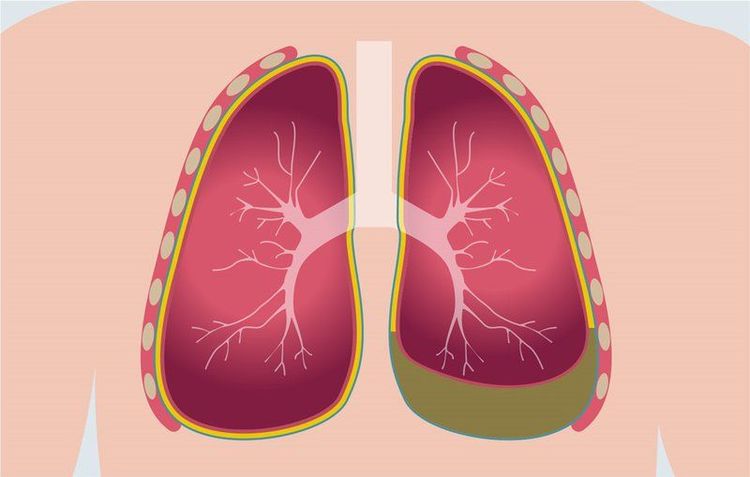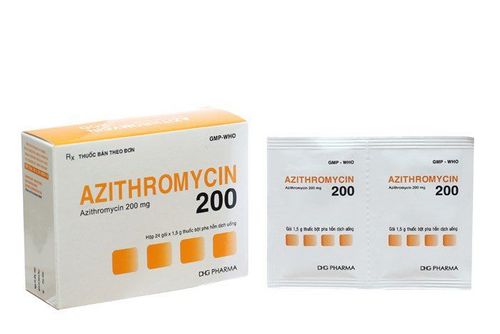This is an automatically translated article.
The article is professionally consulted by Master, Doctor Nguyen Huy Nhat - Department of Medical Examination & Internal Medicine - Vinmec Danang International General Hospital.
Lung diseases are among the most common diseases in the world. Smoking, infections and genetic mutations are the main causes of lung diseases.
1. Lung diseases affecting the airways
Air after passing through the nose or mouth is brought down the trachea, then the airways are branched into tubes called bronchi, which in turn branch to become progressively smaller tubes in the lungs. Lung diseases that affect the airways include:Asthma: the airways become persistently inflamed and can sometimes constrict, causing wheezing and difficulty breathing. Accordingly, allergic symptoms, infections can trigger asthma symptoms. Chronic Obstructive Pulmonary Disease (COPD): is a condition in which the lungs narrow the airways, making it difficult for patients to breathe out normally. Chronic bronchitis: characterized by a persistent cough. Emphysema: lung damage that allows air to be trapped in the lungs. Difficulty exhaling is a sign of this condition. Acute bronchitis: is a sudden respiratory infection, usually caused by a virus. Cystic fibrosis is an inherited condition that causes poor clearance of mucus from the bronchi. The accumulation of mucus over time leads to repeated lung infections.
2. Lung diseases affecting the alveoli
The airways eventually branch off into small tubes called alveoli, the innermost of which reach air sacs called alveoli. It is these air sacs that make up most of the lung tissue. Lung diseases that affect the alveoli include:Pneumonia: an infection of the alveoli usually caused by bacteria. Tuberculosis: a slow progressive pneumonia caused by the bacterium Mycobacterium tuberculosis. Emphysema: is the result of damage to the fragile connections between the alveoli. Smoking is the main cause of this condition. Emphysema both restricts airflow and affects the airways. Pulmonary edema: fluid leaks out of the small blood vessels of the lungs, into the alveoli and surrounding area. One is heart failure and back pressure in the blood vessels of the lungs, the other is due to direct damage to the lungs causing fluid to leak. Lung cancer: There are many forms of lung cancer, which can develop in any part of the lung. Usually lesions in the alveoli or surrounding areas. The type and location of lung cancer will determine the choice of treatment method. Acute respiratory distress syndrome (ARDS): is sudden, severe damage to the lungs caused by another serious illness. Support with mechanical ventilation is often necessary to maintain until the lungs recover. Pneumoconiosis: is a condition caused by inhaling a substance that damages the lungs, such as coal dust, asbestos, etc.

Bệnh lao là bệnh ảnh hưởng đến phế nang của người bệnh
3. Lung diseases affecting the interstitium
The interstitial space is a small space located between the alveoli of the lungs. The small blood vessels that run through it allow the exchange of gases between the alveoli and the blood. Lung diseases affecting the interstitium include:Interstitial lung disease (ILD): is a lung condition affecting the interstitium including idiopathic pulmonary fibrosis, autoimmune disease, sarcoidosis,... Pneumonia and pulmonary edema may also affect the interstitial space.
4. Lung diseases affecting blood vessels
The right side of the heart receives low-oxygen, high-carbon dioxide blood from the veins. From here, blood is pumped to the lungs through the pulmonary arteries for gas exchange. These blood vessels can also become diseased as:Pulmonary embolism (PE): a blood clot (usually in the deep leg veins, deep vein thrombosis) travels to the heart and is pumped to the lungs. Blood clots in the pulmonary artery often cause difficulty breathing and low blood oxygen levels. Pulmonary hypertension: Various conditions can lead to high blood pressure in the pulmonary arteries. This can cause the patient to have difficulty breathing and chest pain. When no cause can be found, the condition is called idiopathic pulmonary hypertension.
5. Lung diseases affecting the pleura
The pleura is a thin lining that surrounds the lungs and lines the inside of the chest wall. A thin layer of fluid allows the pleura to slide over the surface of the lungs, sliding along the chest wall with each breath. Lung diseases that affect the pleura include:Pleural effusion: fluid builds up in the space between the pleura. Pneumonia or heart failure often causes this condition. A large amount of fluid can cause respiratory failure, and it should be drained out through a catheter. Pneumothorax: Air can enter the space between the pleura, causing the lung to collapse. To remove air in the pleura, a catheter is usually inserted through the chest wall. Mesothelioma is a rare cancer that forms on the pleura. Mesothelioma tends to appear decades after asbestos exposure

Tràn dịch màng phổi là một trong những bệnh ảnh hưởng đến màng phổi
6. Lung diseases affecting the chest wall
The chest wall also plays an important role in our breathing. Muscles connect the ribs together, helping the chest expand, along with the lower diaphragm pulls the lungs open to help air enter the lungs, and when contracted, pushes the air out. Lung diseases that affect the chest wall include:Obesity syndrome: because extra weight in the chest and abdomen makes it difficult for the chest to expand, which can lead to serious breathing problems. Neuromuscular disorders: Poor function of the nerves that control the respiratory muscles, causing difficulty breathing. Amyotrophic lateral sclerosis and myasthenia gravis are examples of neuromuscular lung diseases. Thus, there are many different lung diseases, one of the ways to classify them is based on the damage to which part of the respiratory apparatus. A disease can belong to two or more different groups because it can affect many parts of the respiratory system.
Lung diseases leave dangerous complications that greatly affect human health as well as the respiratory system. However, if examined and treated at an early stage, the treatment of lung diseases will become much simpler. Therefore, health experts often recommend that we go for a general health checkup every 6 months to detect possible disease risks early.
Currently, Vinmec International General Hospital has general health checkup packages suitable for each age, gender and individual needs of customers with a reasonable price policy. Accordingly, the patient's examination results will be returned to their home. After receiving the results of the general health examination, if you detect diseases that require intensive examination and treatment, you can use services from other specialties at the Hospital with quality treatment and services. outstanding customer service.
Doctor Nguyen Huy Nhat has many years of experience in the field of respiratory disease treatment at Hue Central Hospital, Hoan My General Hospital, .. before being a doctor of General Internal Medicine Department of General Hospital. Vinmec Da Nang International
To register for examination and detection of common lung diseases, customers can directly go to Vinmec Health System nationwide or contact online HERE.
Reference source: webmd.com














